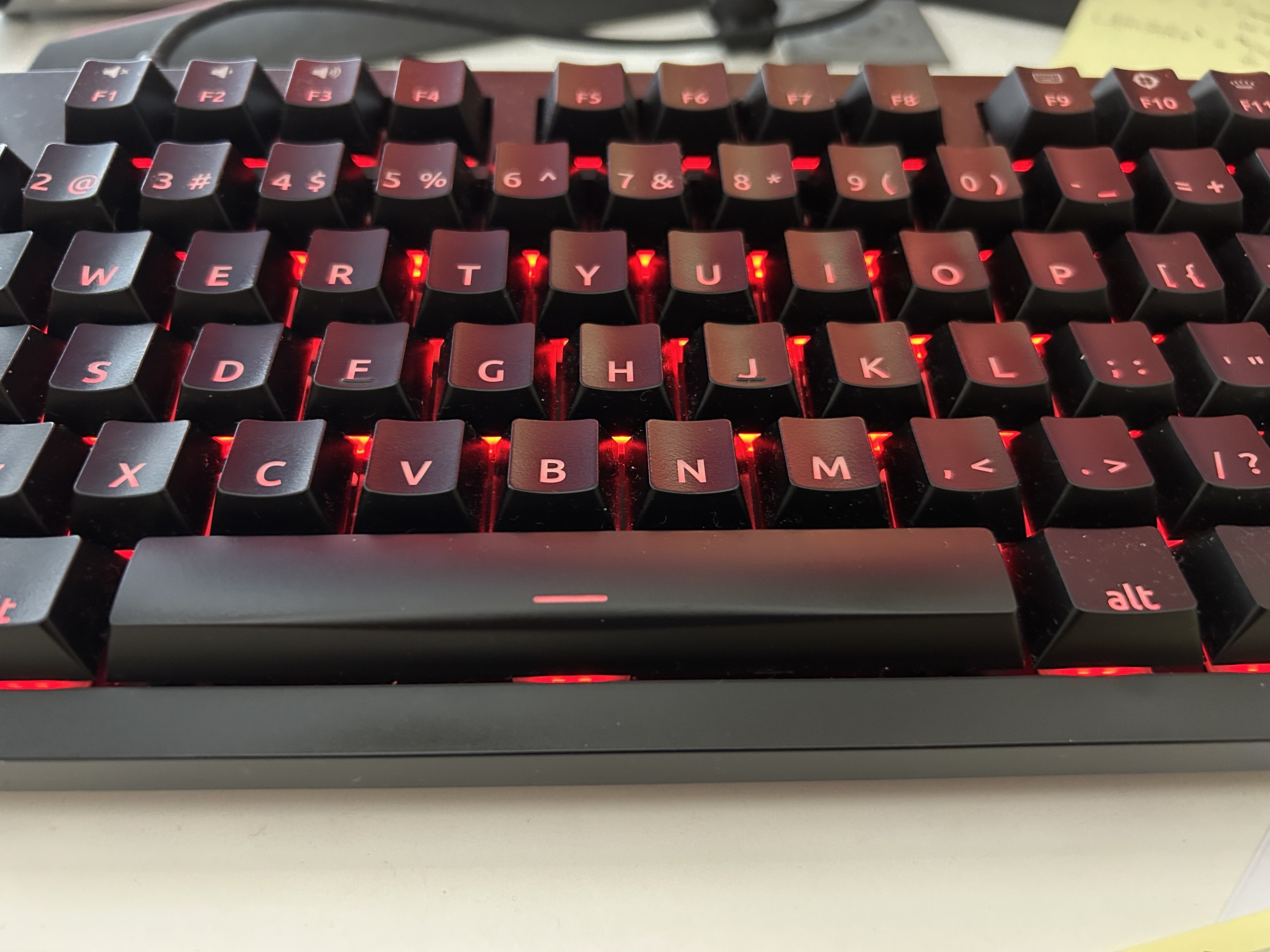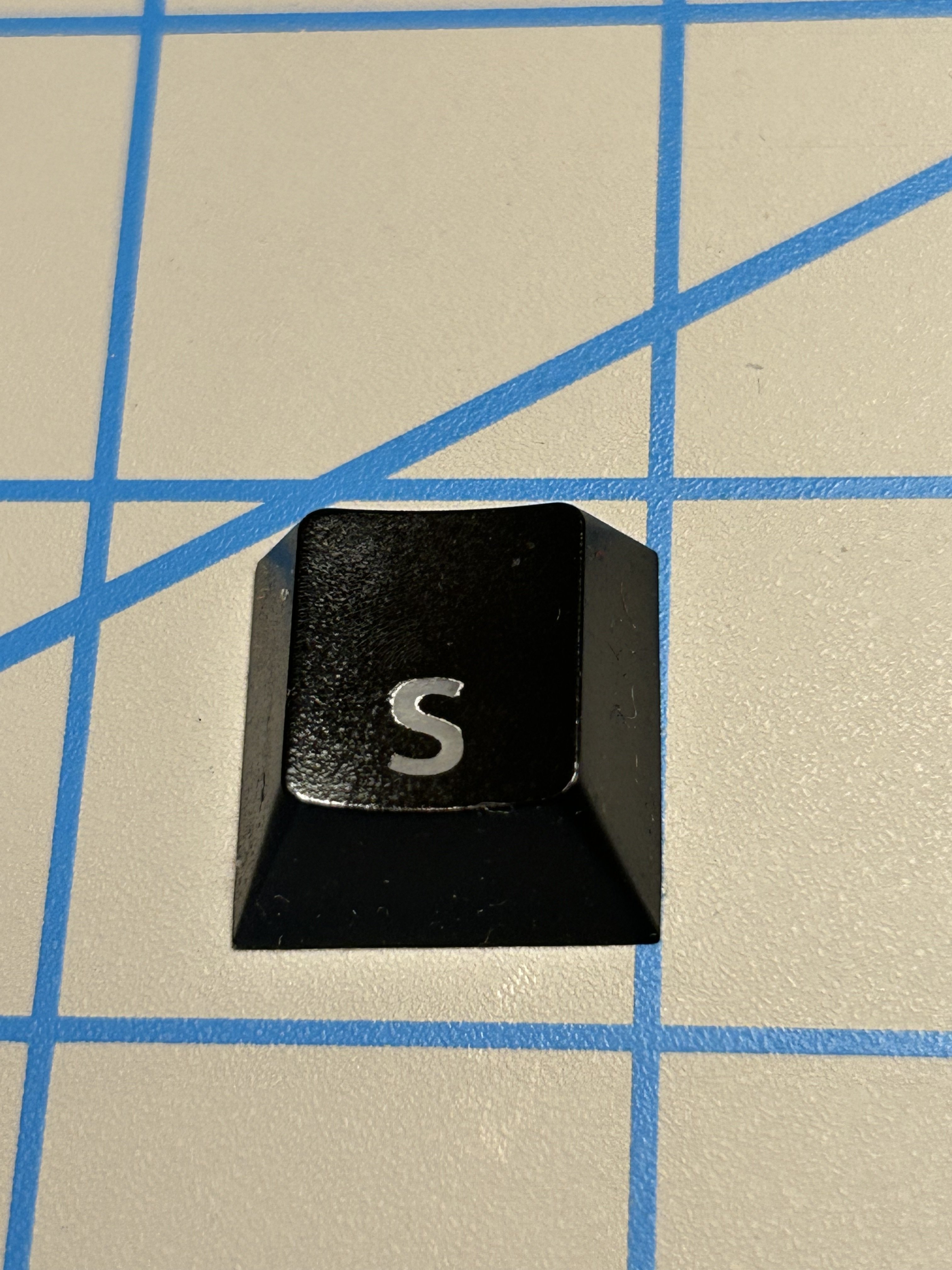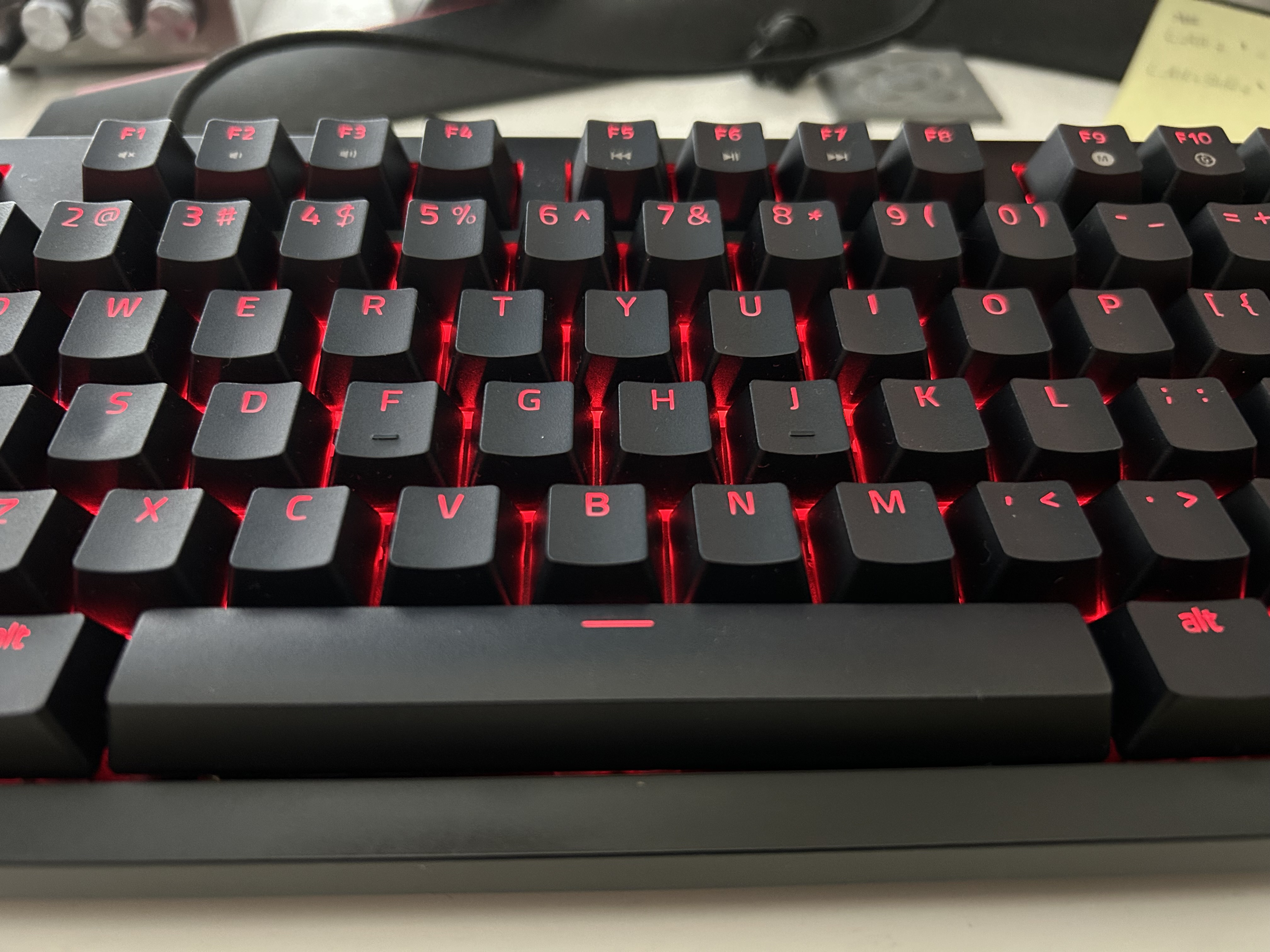I was initially excited about my Keychron V6 keyboard, I was looking forward to a thockier keyboard and wanted the customizability with qmk. The V6 seemed like a good match. But after unboxing it, I realized that the south-facing LEDs weren’t ideal. I had just purchased Razer PBT keycaps, which I loved, but they didn’t work at all with the LEDs and the escaping light underneath just blinded me.
I tried to make the setup work with custom keycaps from fkcaps (https://fkcaps.com/custom/5ELZPQ). While they were cool, they weren’t the same as double-shot PBT keys. The setup wasn’t ideal but I just stuck with it.
When I saw a YouTube video about building a keyboard with KiCad, I was inspired to try it myself. I used an ATmega32U, because I thought it would be easier to integrate, but it did have it’s challenges: limited I/O meant I had to sacrifice the layout switch, and my matrix is best described as “tortuous”. Despite a few errors on my PCB (a group of LEDs were not connected and I completely missed the holes for a stabilizer), the final PCB works amazingly well.
I’ve added a few photos below showcasing my setup before PCB assembly. You can see the light issues under the keys and how the laser etching from fkcaps isn’t very durable.
EDIT: I’ve published the files to github in case anyone wants to have a look: V6 conversion





Thanks! I’ve tweaked the layout a tiny bit since those pics, but I’ve been using it a lot and it’s worked really well. Current project is to retrofit a little baby solenoid onto one of my fully hand-wired boards with tactile switches. Not exactly true IBM “KERCHUNK-THUNK!” but should add a pointless and fun audio feedback to a board I just don’t use that much otherwise.
But seriously… if there is a switch type you’ve been meaning to try, or some weird QMK ideas, add a plate from Keychron and (maybe?) the hotswap sockets, and you’ve got a perfectly legitimate build style.